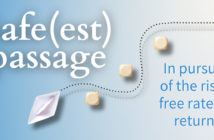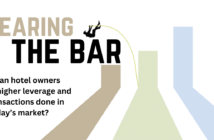As the pandemic continues and commercial real estate owners face cashflow shortfalls, they are desperate to find ways to capitalize their operating losses. Hotel owners are especially motivated because their primary revenue stream relies on an operating business. Owners may pull this essential capital from reserves or take on more debt capital with their existing banks. Others may ask equity investors to inject additional capital or obtain mezzanine capital that acts and is structured like debt but is priced like equity. Private equity, hedge funds, and joint-venture equity capital where the owner agrees to give up the majority of his or her upside in exchange for a meaningful piece of the equity in the asset also are common options. Unfortunately, most of this capital, with the exception of debt capital secured by a senior lien, is very expensive. For example, mezzanine and equity capital will have a 14-percent-to-20-percent internal rate of return for the investors to commensurate for the uncertainty in the current climate.
There are other doors owners can open that lead to relatively more affordable capital, but they require complex structuring and additional risk. If employed, however, owners can potentially weather the downturn without sacrificing a large chunk of future upside to high-priced investors. One such strategy that seems to be winning in today’s environment is the sale of lease-back of ground underneath the hotel or any other commercial real estate asset. This is often referred to as ground lease capital.
THE PARTS vs. THE WHOLE
Let’s start with a few definitions. The fee-simple asset is the asset that has land and improvement in one parcel, or the total asset. The land is referred to as the leased fee and the improvement on top is defined as the leasehold. The strategy of selling the ground under an asset and then leasing it back in the form of a ground lease has been around for more than 100 years. In fact, the most valuable commercial real estate assets in Europe and Asia are capitalized using this method. What makes this approach interesting right now, however, is that the ground lease can be structured with a buy-back option. The ability to repurchase the land later allows owners to essentially collapse the ground lease structure at a future date.
Another benefit of employing a ground lease sale lease-back approach is the ability for the ground lease purchaser to pay the land price based on the future value of the land, which ensures owners of the fee-simple asset don’t leave any money on the table when selling the land.
Institutional funds have raised a significant amount of capital to buy the land under cash-flowing commercial real estate assets and then lease it back for 99 years to the owners of the improvement on top, or the leasehold. What makes this lucrative is the land buyers are willing to pay up to 30 percent of the total assets’ projected value three years in the future – just for the land. In exchange for the value of the land, the ground lessor agrees to receive 6 percent of the proceeds for a hotel and 5.5 percent of the proceeds for a non-hotel asset per year in the form of lease payments. Additionally, the ground lessor typically asks for a 2-percent annual increment on the lease payments.
The best feature, however, is the buy-back option. The owner of the asset is able to repurchase the land at the same price that he or she sold it for, with a potential additional breakage of an interest rate swap or a predetermined capitalization rate that gets applied to the rent payment at the time the buyback option is exercised. Owners are therefore able to access capital when it is valued the most but still retain an option to pay back the landowner when the market improves. Plus, they may be able to refinance the asset into a nonrecourse CMBS loan or a conventional loan when that market reopens for the fee-simple asset and collapse the structure.
CONSIDERATIONS FOR SUCCESS
Before implementing a ground lease strategy, hotel owners must be able to gain consent from their senior lender. This typically requires negotiating a win-win solution for the borrower and the lender. This may include paying down the senior loan with the proceeds received from the sale of the land, as well as putting up credit-enhancing interest reserves.
As we enter into a new year in the middle of an ongoing pandemic, many questions are still unanswered. One thing we know for certain is we must continue to prepare for a prolonged slowdown in commercial real estate, including hospitality. How owners leverage relationships and subject matter experts to explore and execute creative capital structures and sources will be the fulcrum of their future success.




